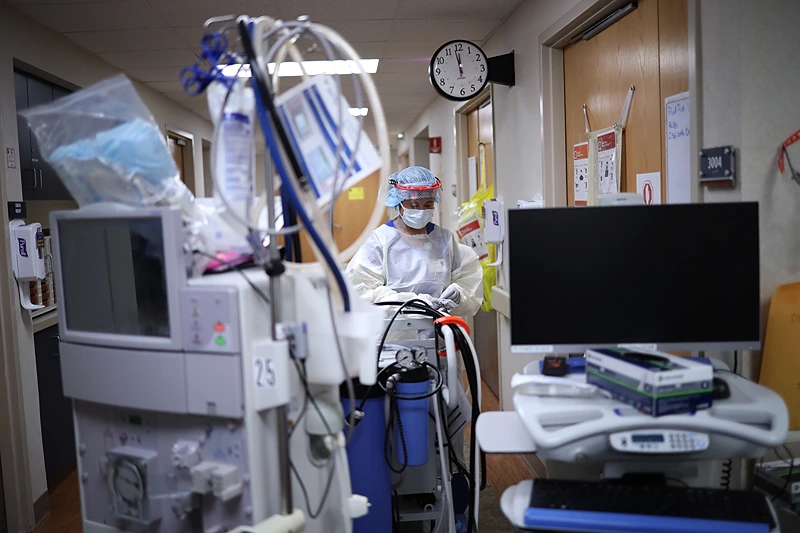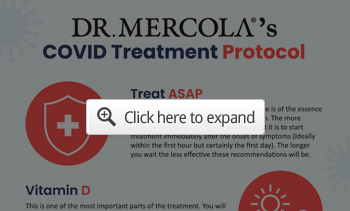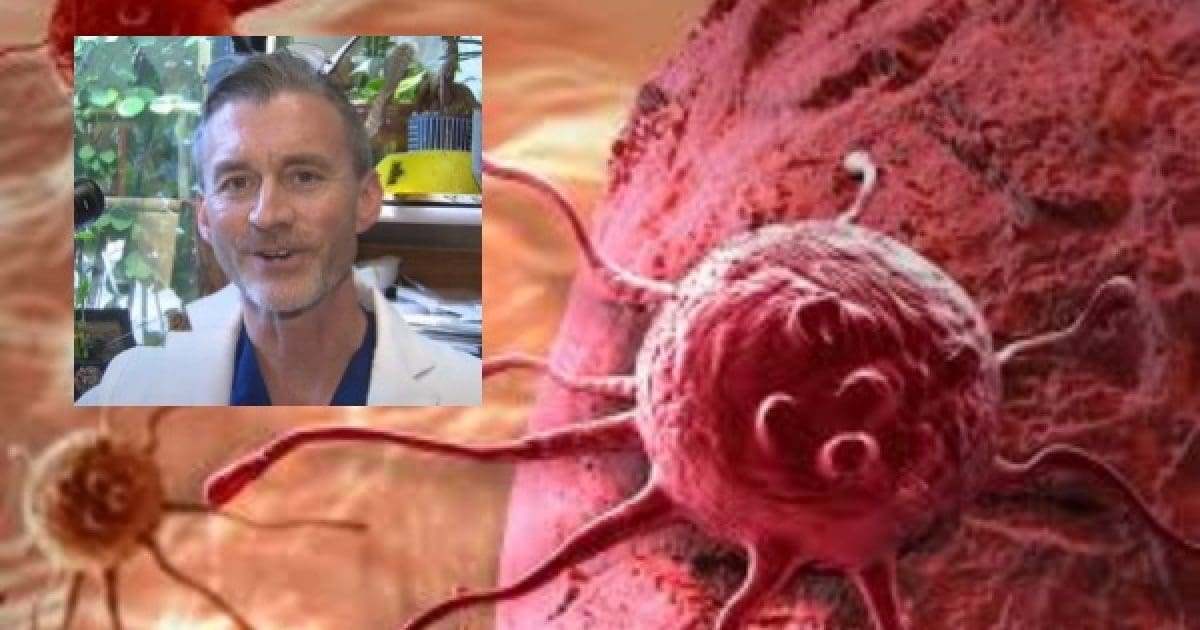The effectiveness of consistent early screening mammograms has been studied for many years with mixed results. Current research published by the University of California in March 2022, showed half of all women who got annual mammograms will experience at least one false-positive test after 10 years.1
False-positive testing from mammography as a screening tool can lead to overdiagnosis and overtreatment, including unnecessary biopsies.2 A past study3 from the John Wayne Cancer Institute revealed needle biopsy can increase the spread of cancer compared to patients who received excisional biopsy, also known as lumpectomies.
After a false-positive mammography, needle biopsies are widely used to diagnose breast cancer. But this can accidentally cause malignant cells to spread from the tumor site and encourage metastasis to form in other areas of your body. The researchers from John Wayne Cancer Institute concluded:4
"Manipulation of an intact tumor by FNA [fine-needle aspiration] or large-gauge needle core biopsy is associated with an increase in the incidence of SN [sentinel node] metastases, perhaps due in part to the mechanical disruption of the tumor by the needle."
There's also a significant financial cost to annual mammogram screenings. According to the American Cancer Society,5 73% of women over 45 had a screening mammogram within the past 2 years. In the U.S., these percentages add up to an overwhelming number of women. As of July 1, 2020, there were 62.03 million women from 40 to 70 years in the U.S.6
Assuming the average out-of-pocket cost for a mammogram in the U.S. is roughly $100,7 the total revenue generated is in the billions of dollars. But the financial cost is not the only downside to annual mammogram testing, and women do have other choices for effective screening.
False-Positive Mammograms Are Not Uncommon
The featured study8 was published in JAMA Oncology in March 2022. The researchers asked the question if there was a difference between screening for breast cancer using traditional digital mammography or 3D mammography, also called digital breast tomosynthesis.
Data were collected between January 1, 2005, and December 31, 2018, at 126 facilities. It included 903,495 women aged 40 to 79 years. The results showed there were 2,969,055 nonbaseline screening mammograms interpreted by 699 radiologists; 58% of those mammograms were performed in women younger than 60 years.
Importantly, it was also noted that 46% of these mammograms were on women who had dense breast tissue. Michael Bissell, an epidemiologist in the UC Davis Department of Public Health Sciences and researcher in the study, said in a press release:9
"The screening technology did not have the largest impact on reducing false positives. Findings from our study highlight the importance of patient-provider discussions around personalized health. It is important to consider a patient's preferences and risk factors when deciding on screening interval and modality."
After data collection, the researchers analyzed the type of mammography used, screening interval, age of the woman, and breast density. From this data, they estimated that a woman would have a cumulative risk of at least one false positive after receiving mammograms each year or every other year for 10 years.10
The analysis also showed a false positive resulted in repeated imaging within six months or a biopsy recommendation. The scientists then separated the data for 2D and 3D digital mammography, theorizing that 3D may have a lower risk of a false positive test.
While the theory was proved by the data, the reduction in risk was minimal. They estimated that over 10 years of 3D screening, 50% of women had at least one false-positive test while 56% of those receiving traditional digital mammography had at least one false positive. The comparison between those who had short interval follow-up recommendations and biopsy recommendations differed by only 1%.
Mammograms May Not Work for Women With Dense Breasts
The researchers also found that regardless of whether women had 2D or 3D mammography, the false-positive results were higher in women who had extremely dense breasts.11
The difference between false positives in women who had entirely fatty breasts and those with dense breasts was significant. Using 3D mammography, women with entirely fatty breasts had a 31% probability of a false positive test, while those with dense breasts had a 67.3% probability of a false positive test.12
The researchers also found that, in general, between both types of mammography, women who had almost entirely fatty breasts had a lower probability of a false positive test as compared to women with extremely dense breasts. Additionally, women with dense breasts did not benefit from cancer detection with tomosynthesis.
In addition to the problem with overdiagnosis is the reality that mammograms do not detect all breast cancer. The documentary, “Boobs: The War on Women’s Breasts” available on DVD or Vimeo digital,13 tells the story of Nancy Cappello. Capello was diagnosed with breast cancer after receiving two normal mammograms.
Capello's cancer was missed because she had dense breast tissue. It was only found when her doctor felt the ridge in her breast and prescribed an ultrasound in addition to a mammogram. Capello became a pioneer in the movement to teach women about dense breast tissue and how using a mammogram is "like finding a polar bear in a snowstorm." She said:14
"So I went on a quest — for research — and I discovered for nearly a decade BEFORE my diagnosis, six major studies with over 42,000 women concluded that by supplementing a mammogram with an ultrasound increases detection from 48% to 97% for women with dense tissue.
I also learned that women with extremely dense tissue are 5x more likely to have breast cancer when compared with women with fatty breasts and that research on dense breast tissue as an independent risk factor for breast cancer has been studied since the mid 70s.
… I endured a mastectomy, reconstruction, 8 chemotherapy treatments and 24 radiation treatments. The pathology report confirmed — stage 3c cancer because the cancer had traveled outside of the breast to my lymph nodes. Eighteen lymph nodes were removed and thirteen contained cancer — AND REMEMBER — a "normal" mammogram just weeks before. Is that early detection?"
Cappello succumbed to her breast cancer in 2018 and died after a 15-year fight to beat her cancer,15 but as a result of her efforts, 38 states have passed mandatory breast density reporting laws. The film states that up to 90% of women may have some degree of dense breast tissue that may affect a mammogram's outcome and could benefit from whole breast ultrasound — a procedure that's generally used as an adjunct to a mammogram, rather than a primary test.16
Mammography Radiation Is Not Without Risk
There's also the issue that mammograms use ionizing radiation in a relatively high dose. This, in and of itself, can contribute to the development of breast cancer. A 2016 study concluded:17 "… ionizing radiation as used in low-dose X-ray mammography may be associated with a risk of radiation-induced carcinogenesis."
The researchers pointed out that women who carry a genetic variation or have an inherited disposition of breast cancer should avoid radiation as much as possible. Unfortunately, conventional medicine often recommends routine or even extra mammography for those who have an inherited disposition for breast cancer18 or a genetic mutation.19
The next generation of mammography, 3D tomosynthesis, is basically a CT scan for the breast. Radiation exposure from this is even greater than standard mammograms by a significant margin. According to one study,20 annual screening using digital or film mammography on women aged 40 to 80 years is associated with an induced cancer incidence and fatal breast cancer rate of 20 to 25 cases per 100,000 mammograms.
This means an annual mammogram could cause 20 to 25 cases of fatal cancer for every 100,000 women who got the test. A 3D mammography requires multiple views to get three-dimensionality. It stands to reason your total radiation exposure is considerably higher than from a standard 2D mammogram.
Additionally, data do not support screening asymptomatic women as it is not saving extra lives. A response published in The BMJ21 to research published in The Lancet22 was written by Hazel Thornton, an honorary visiting fellow in the department of health sciences at the University of Leicester. She included reports on her testimony before the House of Commons Health Committee on breast cancer services.
She was asked why she thought the NHS Breast Screening Programme was “a costly trawl of an asymptomatic public group … creating huge costly psychological and physical morbidity,” to which part of her answer was that it:23
“… focuses on the women who benefit, in other words, the one life that is saved, and it overlooks the hundreds of women that go through the process and in some cases suffer psychological harm for that one. It is unbalanced and disproportionate and should be reviewed, in my opinion, at the moment.”
In a Cochrane review of the literature24 they discovered — as Thornton testified — for every 2,000 women screened over 10 years, one avoids dying of breast cancer, and 10 will be treated unnecessarily. Additionally, over 200 women will undergo psychological distress and uncertainty for years after receiving false-positive findings.
One cohort study25 engaged participants in Denmark from 1980 to 2010. They also found screening did not lower the incidence of advanced tumors and concluded: “that 1 in every 3 invasive tumors and cases of DCIS [ductal carcinoma in situ] diagnosed in women offered screening represent overdiagnosis (incidence increase of 48.3%).”26
You Have Choices
Although mammography is the most frequently recommended breast cancer screening tool, you have choices for diagnostic testing that do not involve radiation. Women should be provided enough information to make an informed decision and allowed to use their choice. When you know the options, you can ask to have the test that best suits your situation.
Other potentially safer options for breast examination include clinical breast exams, thermography, and ultrasound. Thermography and ultrasound don't use radiation and can detect abnormalities that mammograms can miss, especially in women with dense breasts.
While it’s also claimed that mammography can catch cancers that an ultrasound misses; according to the National Institutes of Health, “… researchers do not know with full certainty whether 3D mammography is better or worse than standard mammography at avoiding false-positive results and identifying early cancers in all types of patients.”27
Not only that, the U.S. Preventive Services Task Force (USPSTF) on breast cancer screening admits that “… the current evidence is insufficient to assess the benefits and harms of digital breast tomosynthesis (DBT) as a primary screening method for breast cancer.”28
Although they are effective, alternative tests can be difficult to access in the U.S. due to federal guidelines and the influence of the billion-dollar mammography industry. To deny women the use of these screening programs, the USPSTF claims:
“… current evidence is insufficient to assess the balance of benefits and harms of adjunctive screening for breast cancer using breast ultrasonography, magnetic resonance imaging, DBT, or other methods in women identified to have dense breasts on an otherwise negative screening mammogram.”
It's also important to recognize that screening does not prevent breast cancer. Instead, prevention requires healthy lifestyle choices, paying attention to nutritional factors, and avoiding toxins.
For example, vitamin D is of vital nutritional factor that can reduce your risk of all cancer,29 including breast cancer.30 Animal and human studies have also demonstrated that omega-3 fatty acids can help prevent breast cancer and have a positive effect during breast cancer treatment.31
To understand your potential risk, it's crucial that you know your vitamin D level and omega-3 index. Conventional medicine has led many women to believe that simply getting an annual test will protect them from breast cancer. Leading a healthy lifestyle and being informed of your screening options can help you avoid this potentially deadly pitfall.





